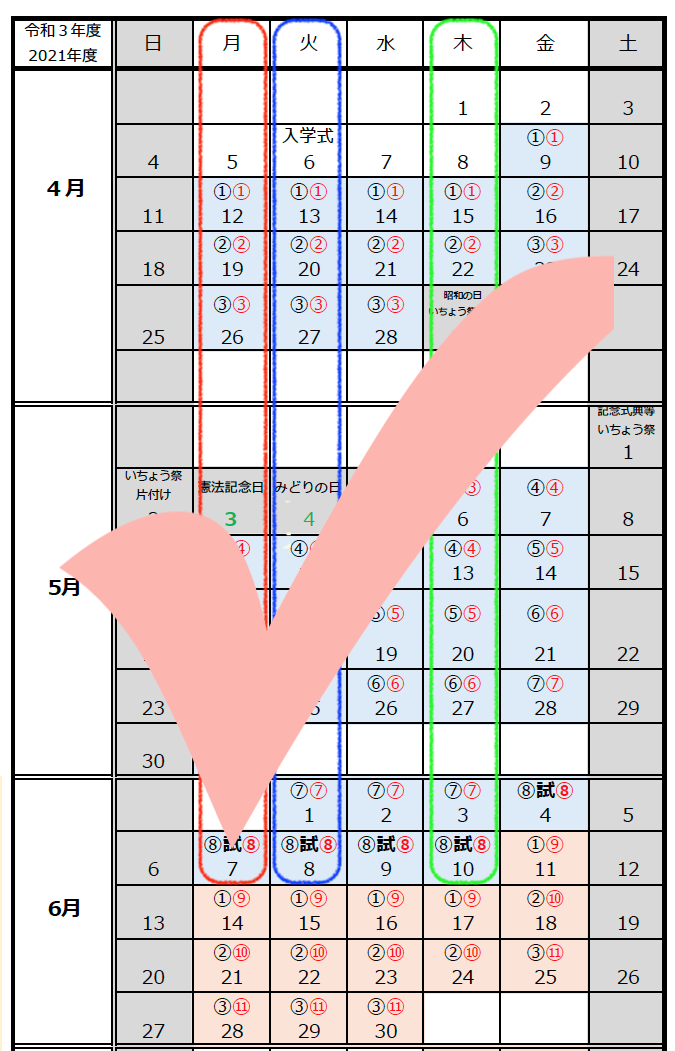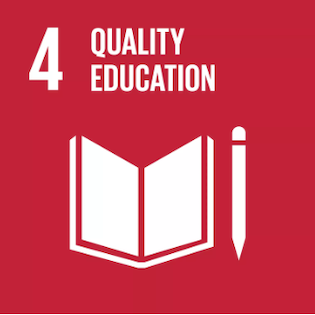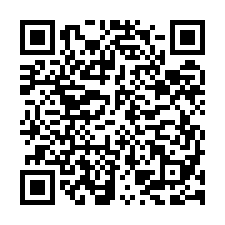COデザイン科目「質的研究のデザ
イン」:
2021
Qualitative
Study and Ethnography: An introduction

COデザイン科目「質的研究のデザ
イン」:
2021
Qualitative
Study and Ethnography: An introduction

| 1.履修対象
/Eligibility |
COデザイン科目(大
学院生のみ) |
3B1401
(intellectual gymnastics) |
| 2.開講時期/Schedule |
4学期セメスター春学期・月曜日6〜
7限(2021年度) |
Spring Term, Mon
6,Mon 7 |
| 3.講義室/Room |
Zoomによる遠隔授業/《全部オン
ラインで自習したい人のために「電脳教室:質的研究のデザイン」》 ★ 質的研究のデザインのYouTube レクチャー |
|
| 4.講義題目/Course
Name エクストラ |
訪問術A(質的研究のデザ
イ
ンA)[→英語版] 今期の成績評価の 参考にします→ ・この授業で学ん だことを、パワポ/キーノート/pdfのシート2枚にまとめ、池田光穂(rosaldo [at]cscd.osaka-u.ac.jp)まで期日までに送ること。 |
Art of Field
Research A: Qualitative Study and Ethnography |
| 5.授業の目的と概要/Course
Objective |
この授業は、質的研究のデザイン(計
画立案)と実践、また最終的な
成果物であるエスノグラフィー(民族誌)について考えます。研究のデザインを立案することは、その研究方法についての具体的な戦略を考えることにつながり
ます。そのため、それぞれの方法についてのミニ実習とアウトカム発表をおこなうことも、この授業の目的になります。 ※前年度開講の《訪問術A(質的研究のデザイン)2018, 2019, 2020》とまぎら わしいので注意してください——アイコンで区別しよう。 |
These
classes consider the design (planning) and implementation of
qualitative research and also consider ethnography (the study of human
culture), which is the final deliverable. The planning of research
design leads to consideration of the specific strategies for the
research method. Therefore, another objective of these classes is to
perform mini workshops on each method and presentations of the outcomes. |
| 6.学習目標/Learning
Goals |
1.質的方法の特性について理解し、
量的方法との違いや、それぞれ
の利点と弱点を、他者(同僚の学生)に説明することができる。 2.さまざまなタイプの質的方法について、簡潔な定義を与えることができ、その方法を駆使すれば、どのようなアウトカムを得られるか、他者に説明すること ができる。 3.質的な方法論とそれにもとづくエスノグラフィーの記法を学び、日常生活におけるさまざまなコラボレーションのあり方(=コラボレーション・デザイン) を発見し、各人の立場から具体的な解決方法を提言することができる。 |
1.
To understand the characteristics of qualitative methods and to be able
to give an explanation to other people (fellow students) on the
differences between qualitative and quantitative methods and on the
advantages and disadvantages of each. 2. To be able to give simple definitions of various different types of qualitative method and to be able to explain to others what kind of outcome can be obtained when those methods are used. 3. To learn the qualitative methodologies and how to write an ethnography based on those methods, to discover various styles of collaboration in daily life (=collaboration design) and to be able to propose specific methods for solution from the standpoint of each person. |
| 7.履修条件・受講条件
/Requirement;
Prerequisite |
★★★【新型コロナウイルス流行によ
りZoomによる遠隔授業】受講登録を済ませて、担当者(rosaldo@cscd.osaka-u.ac.jp)までご連絡ください。招待メールをおく
りますので、そこに記載されているURLをクリックしてください。 |
These
are participation type classes, so a condition for taking the course is
to attend each session and to actively collaborate with the other
students, who will all be strangers to each other. |
| 8.特記事項/Special
Note |
特記事項
/Special Note
シラバスをみていただき、事前にテーマを想像されたり、情報を入手しておくと、学習意欲向上のインセンティブになると思います。復習用の資料のダウンロー
ドや、スケジュールの変更などは、以下のウェブページからリンクする訪問術B【質的研究のデザインB】のページなどでお伝えします。 |
We
think that the students will get an incentive that increases their
willingness to learn if they read the syllabus and imagine what the
theme will involve before the classes and gather information in
preparation. Matters such as the downloading of materials for revision
and changes to the schedule will be notified on the “Qualitative
research design and ethnography” page linked to on the web page below. |
| 9.授業計画/Special
Plan;(毎回)題目/Title;(毎回)内容/Conten |
【重要】授業へのアクセス方法 ●授業への参加方法について (0)毎回、遠隔授業形式でおこなう。授業参加人数の上限を30名までとする。 (1)毎回、授業単元の資料pdf(パスワード付)をダウンロードして読む (2)授業の内容のユーチューブ映像を見て予習をする (3)文献を読んだことを前提に、授業は最初から質疑 応答と全員でのディスカッションおこなう (4)この方法で7回までおこない、8回目の最終授業 で、一人持ち時間5分(パワポ資料2枚まで)でプレゼンテーションをおこなう。 (5)最終授業から1週間以内に、改善したパワポ資料を提 出して成績判定とする  【学事歴:png】 = ========================== (1)04月12日 (月)----170410-Qualitative_2002-2017.pdf (2)04 月19日 (月)----170417-Qualitative_2002-2017-2.pdf (3)04 月26日 (月)----170424-Qualitative_2002-2017-3.pdf (4)04 月26日 (月)----170508-Qualitative_2002-2017-4.pdf (5)05 月10日 (月)----170515-Qualitative_2002-2017-5.pdf (6)05 月17日(月)----170522-Qualitative_2002-2017-6.pdf (7)05 月24日 (月)----170529-Qualitative_2002-2017-7.pdf (8) 05月31日(月)----170605-Qualitative_2002-2017-8.pdf (X)XX 月XX日 (月)---- UF_Grounded_triangulation.pdf = ========================== ※資料は pdfファイルで提供されてパスワードがかけられています。 以下の【番号】でレクチャー・ページにリンクします |
If special consideration regarding the taking of this course is necessary due to reasons such as a disability, please consult in advance with the academic affairs related contact point for the department belonged to (such as the school affairs section or graduate school affairs section) or else with Trans-disciplinary Education Division of Purser Department in the Center for Education in Liberal Arts and Sciences. In addition, please inform the teacher responsible for the class at an early stage, such as at the first class. |
| 10.授業形態/Type of
Class |
講義とワークショップ
|
|
| 11.授業外における学習
/Independent Study
Outside of Class |
復習用の資料のダウンロードや、スケ
ジュールの変更などは、以下の
ウェブページからリンクする【質的研究のデザインとエスノグラフィー】のページなどでお伝えします。 +リサーチプロポーザルを書く |
Matters
such as the downloading of materials for revision and changes to the
schedule will be notified on the “Qualitative research design and
ethnography” page linked to on the web page as URL https://goo.gl/xPqYKz |
| 12.教科書・教材
/Textbooks;著者名/Author;
教科書名/Title;出版社名/Publisher;ISBNコード/ISBN; |
フリック,ウヴェ『(新版)質的研究入門』小田博志ほか訳、春秋社、
2011年.ISBN 9784393499108 これには旧版『質的研究入門』小田博志ほか訳、春秋社、 2002年があります。授業資料は、後者に準拠しています。 1.質的研究とはなにか→「質的研究で論文を書くこと」 2.理論的立場 3.テクストの構築と理解 4.プロセスと理論 5.研究設問 6.フィールドへの参入 7.サンプリング戦略 8.半構造インタビュー 9.データとしてのナラティブ 10.フォーカスグループインタビューとディスカッション 11.口頭データ収集法の概観 12.観察、エスノグラフィー、視覚データ法 13.視覚データ収集法の概観 14.データの文書化 15.コード化とカテゴリー化 16.シークエンス分析 17.テキスト解釈法の概観 18.質的研究の基礎づけと価値基準 19.質的研究の執筆 20.質的研究におけるコンピュータ 21.質的研究と量的研究→「質的研究と量的研究のちがい」 22.質的研究の質 ===================================== フリック,ウヴェ『質的研究のデザイン』鈴木聡志訳、新曜社、2016年(Flick_DQR.pdf) with passwords 1.質的研究とは何か? 2.アイディアからリサーチクエスチョンへ(「発想の発端」から「調査のための問い」へ) 3.サンプリングと選択とアクセス 4.質的研究のデザイン 5.資源と障害 6.質的研究の質 7.質的研究の倫理 8.言語データ 9.エスノグラフィー・データとビジュアル・データ(「民族誌の資料情報」と「視覚的資料情報」) 10.質的データを分析する 11.質的研究をデザインする:いくつかの結論 |
Textbooks Uwe Flick “Shitsuteki kenkyuu nyuumon” (Introduction to qualitative research) Translated by Hiroshi Oda et al., Shunjusha Publishing, 2011, ISBN 9784393499108 |
| 13.参考文献/Reference |
・パーカー、イアン『ラディカル質的心理学』八ッ塚一郎訳、ナカニ
シ
ヤ書店、2008年、ISBN 9784779502972 ・データ対話型理論の発見 : 調査からいかに理論をうみだすか / B・G・グレイザー, A・L・ストラウス著 ; 後藤隆, 大出春江, 水野節夫訳,東京 : 新曜社 , 1996 |
•
Ian Parker “Radikaru shitsuteki shinrigaku (Radical quantitative
psychology) Translated by Ichiro Yatsuzuka, Nakanishiya Shoten, 2008,
ISBN 9784779502972 • Deeta taiwagata riron no hakken: Chousa kara ika ni riron wo umidasuka (The discovery of data dialogue type theory: How to create theory from investigations)/Written by B.G. Glaser and A.L. Strauss, translated by Takashi Goto, Harue Ode and Setsuo Mizuno, Tokyo: Shin-yo-sha, 1996 |
| 14.成績評価/Grading
Policy |
平常点(60%)とレポート
(40%)を基礎にして平常点(=発言
を通した授業への貢献)を加味して総合的に判断します。 成績評価に関するアンケート(自己評価書)の提出をお願いしてます。これまで授業にほぼ出ていないひとも、この評価書と付加的なレポートで成績取得への道 が啓けます。なお、5月21日の授業でこのアンケートをとりますが、本日出席できない学生は、後日提出も可能です。——授業の内容は裏バス(URL)にあ ります。 180521seiseki-hyoka.pdf |
Comprehensive
judgment based on the class participation (60%) and report (40%) with
consideration of the class participation (= spoken contribution to
classes). |
| 15.コメント/Other
Remarks |
関連する授業にエスノグラフィーの読
解を目標にした旧年度開講の「質的研究のデザインB」がありまし
た。資料をインターネット上で公開
しています。自習にお使いください。 |
“Art
of Field Research B (Qualitative Study and Ethnography)” is available
as a related class on the interpretation of ethnography. Taking both
courses will lead to more effective learning. |
| 16.キーワード/Keywords |
質的研究、フィールドワーク、インタ
ビュー、ナラティブ、エスノグ
ラフィー(民族誌)、研究倫理 |
Qualitative
research, field work, interviews, narrative, ethnography, research
ethics |
| 17.受講生へのメッセージ
/Messages to
Prospective Students |
関連授業として、質的研究を通して制
作されたエスノグラフィーを読
んでゆく「質的研究のデザインB」という授業があり、また質的研
究のあり方について、批判的にとらえなおす「アクションリサーチの理論と実践」
がありま
す。君の授業参加を通して、君の質的調査能力を君と君の新しい仲間との交わりを通してそれをやり遂げるであろうということは次のページにヒントになること
が記載されています。 ◎最近接発達領域(ZPD) ◎実践共同体・コミュニティ ◎スマート・オフィス とスマート・ユニヴァーシティ ◎STiPS受講学生用のご紹介シラバス→ mikeda_STiPSSyllabus2021.pdf(パ スワードなし) ●なぜ質的研究が大切か? ・「蘭由岐子さんは、なぜハンセン病療養所入所者の聞き取り するようになったのか?」 ・「見ること・知ること・関わること」 ●この授業は大阪大学COデザインセンター「SDGs 達成に向けた高度汎用力教育開発」の支援をうけています。この授業に関連する項目は以下のとおりです。   SDG4「質の高い教育」;SDG9「産業と技術革新の基盤」 |
Related
classes that are available include “Art of Field Research B
(Qualitative Study and Ethnography),” which examines the reading of
ethnography that has been produced through qualitative research. There
is also “Theory and Practice of Action Research,” which critically
reconsiders how qualitative research should be performed. |
■訪問術A(質的研究のデザ インA): 2020-2021へのアクセスの方法(上述の再掲です)
■リンク(質的研究のデザインコレクション:マニア向け)
■文献
Copyleft, CC, Mitzub'ixi Quq Chi'j, 1997-2099


Do not paste, but [Re]Think our message for all undergraduate students!!!
Fernando
Botero's cat box, mascot of our class, "Qualitative Study and
Ethnography: An introduction"